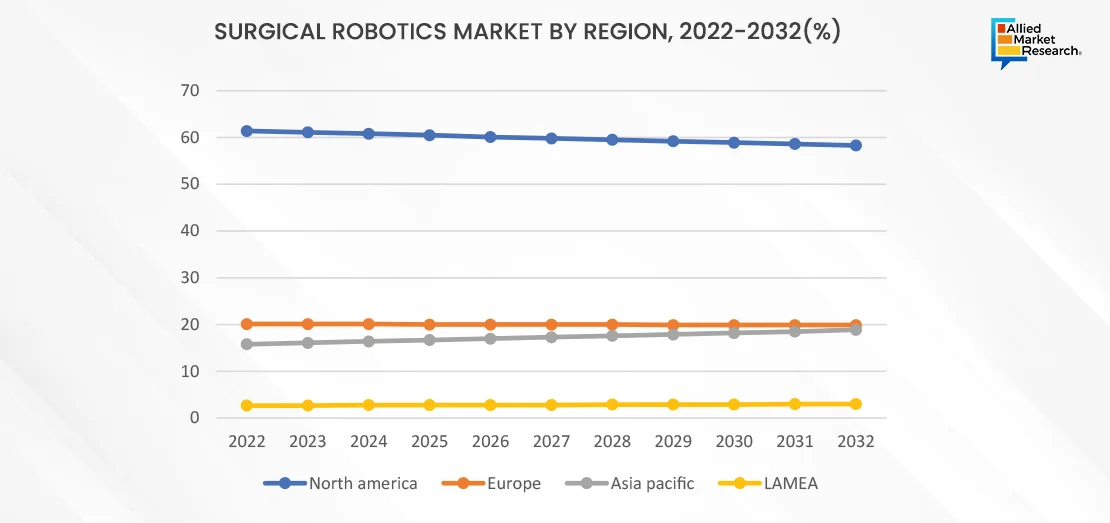Table Of Contents

Roshan Deshmukh

Pooja Parvatkar
Surgical Robotics: Transforming Precision and Possibilities in Modern Medicine

In recent decades, technological advancements have revolutionized the field of medicine, and one of the most notable breakthroughs is the advent of surgical robotics. The technology uses robotics to assist surgeons in performing intricate procedures with precision and efficiency. Surgical robotic systems typically consist of a console where the surgeon controls the robotic arms, a patient-side cart equipped with robotic arms, and a high-definition camera system. The surgeon operates the console, controlling the robotic arms with precision, while the robotic arms carry out the surgeon's movements with enhanced stability and accuracy.
Before robots were used in surgeries, surgeons faced numerous challenges in performing complex procedures. Restricted access to hard-to-reach areas inside the patient’s body, and the risk of hand tremors posed significant obstacles. Conventional tools often required large incisions on the patient’s body, leading to extended recovery times and increased patient discomfort. Additionally, delicate procedures are susceptible to fatigue-induced errors during lengthy operations. The introduction of surgical robots has revolutionized the field by enhancing precision, providing better visualization, and allowing minimally invasive approaches, thereby addressing many of these challenges and improving overall patient outcomes.
Why is Surgical Robotics Gaining Importance?
One of the primary advantages of surgical robotics is that it offers unparalleled precision and accuracy in surgeries. Robotic arms can perform delicate maneuvers with reduced hand tremors, allowing for precise incisions and suturing. This level of precision is particularly beneficial in complex and sensitive surgeries, such as neurosurgery and cardiac procedures.
Surgical robotics has significantly contributed to the rise of minimally invasive surgery (MIS). Moreover, with the use of smaller incisions and robotic instruments, patients experience reduced trauma, less scarring, and faster recovery times. Minimally invasive surgery not only enhances patient outcomes but also minimizes the risk of infections and complications associated with traditional open surgery.
As a modern principle of surgical oncology, surgery should not only remove the complete locoregional tumor but also aim to minimize surgical trauma to the patient to reduce postoperative morbidity and improve quality of life. Surgical robots offer enhanced dexterity and accuracy, which enables surgeons to perform complex procedures through smaller incisions. This results in reduced trauma to the patient, less pain, quicker recovery times, and shorter hospital stays. For instance, according to a 2021 report by the National Library of Medicine, it was reported that robotic surgery is increasingly applied in complex cancer surgery.
Can robotics replace human skills?
While robots have been present in operating rooms since the 1980s, initially assisting with tasks such as holding limbs in place and later with laparoscopic surgery, they have mainly functioned as advanced versions of traditional surgical tools.

Although surgical robots exhibit remarkable sophistication and precision, they essentially serve as tools controlled by surgeons. The complexity arises from the dynamic nature of the human body's movements. Some robots already demonstrate a degree of autonomy, such as the ROBODOC used in hip surgery to shave bone around the hip socket.
Certain procedures are thought to benefit from the incorporation of robots, with their regular application in urology, gynecology, general surgery, and ear, nose, and throat surgeries. However, integrating a robot into surgical procedures is not merely a matter of installation; it fundamentally transforms the entire approach to surgery. The traditional communication and teamwork within the surgical team are disrupted as surgeons operate from behind a robot console, necessitating an adjustment to a new dynamic by the surgical teams.
The table below represents the global revenues for the years 2022 and 2032 for the surgical robotics market along with the CAGR.
| MARKET | 2022 ($ MILLION) | 2032 ($ MILLION) | CAGR% (2023-2032) |
| Surgical Robotics Market | 78,799.27 | 188,798.98 | 9.1% |
*Note: The market numbers & CAGR here are inclusive of the impact of COVID-19 Source: AMR Analysis
Global Adoption of Surgical Robotics
The surge in the adoption of surgical robotics represents a transformative shift in the field of healthcare, revolutionizing the way complex medical procedures are conducted. Surgical robots, equipped with precision instruments and advanced imaging capabilities, enable surgeons to perform intricate procedures with unparalleled accuracy and minimal invasiveness. For instance, according to 2021 report by National Library of Medicine, an online survey was conducted with collaboration of European Association of Neurosurgical Societies (EANS) and the Congress of Neurological Surgeons (CNS). The survey revealed that a significant 48.5% of neurosurgeons reported incorporating robotic technology in surgeries. According to the same report, the highest rates of adoption of robotics were observed for Europe (54%) followed by North America (51%). Additionally, India has over 70 centers and 500 trained surgeons, over 12,800 surgeries have been performed in the last 12 years. The increasing acceptance of robotic-assisted surgeries by both medical professionals and patients underscores a growing confidence in the safety and efficacy of these technologies. The surge in adoption is also fueled by the continuous research and development efforts, which lead to the refinement of existing robotic platforms and the introduction of innovative applications in various surgical specialties.
Key Players in Surgical Robotics Market
The major players that operate in the surgical robotics market are Smith & Nephew plc, Intuitive Surgical, Inc., Johnson & Johnson, Accuray Incorporated, Zimmer Biomet Holding, Inc., Stryker Corporation., Midea Group Co., Ltd., CMR Surgical Ltd., Medtronic plc, and Renishaw plc.
Key players are adopting several strategies, such as product launches, product development, collaboration, product approval and acquisition to expand and cater to the demand for surgical robots.
In February 2022, Smith+Nephew the global medical technology business, announced the commercial launch of its next generation handheld robotics platform, the CORI Surgical System, in Japan.
In November 2022, CMR Surgical (CMR), the global surgical robotics business announced a collaboration agreement with Ethicon, a Johnson & Johnson MedTech company, to expand choice across surgical robotics and advanced laparoscopic instruments.
As per AMR analysis, the global surgical robotics market was valued at $78,799.27 million in 2022 and is estimated to reach $188,798.98 million by 2032, exhibiting a CAGR of 9.1% from 2023 to 2032. During this analysis, North America accounted to be the highest revenue contributor, whereas Asia-Pacific is estimated to have the fastest growth accounting to be 11.0% from 2023 to 2032.
North America held the leading position in the market due to increase in technological innovation in robotics and medical technology, rise in health awareness about early diagnosis of cancer, and well-developed healthcare infrastructure. In addition, Asia-Pacific is expected to show lucrative growth in the coming years owing to an increase in adoption of advanced technologies and surge in usage of applications of robotics technology in the healthcare sector.

Key players intending to engage in the surgical robotics market can also find profitable prospects in emerging markets such as Asia-Pacific and LAMEA. This is explained by the fact that these regions are marked by a substantial population base, rapid economic development, and increasing expenditures on healthcare. In addition, the market is expected to grow due to the alarming rise in chronic diseases in these regions.
The Future Outlook

The future of surgical robotics promises unprecedented precision and efficiency in medical procedures. Advancements in AI and haptic feedback systems enable surgeons to perform intricate tasks with enhanced dexterity and minimal invasiveness. With continued innovation, these technologies are poised to reshape surgery, improving patient outcomes and reducing recovery times. Get in touch with AMR analysts for a deeper understanding of the technology.

